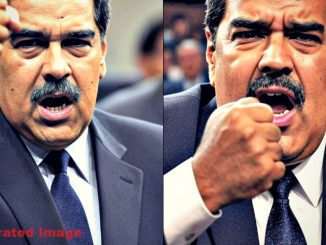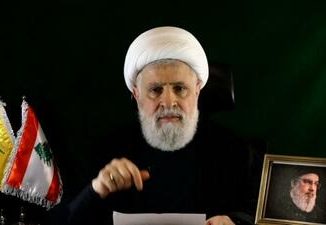
Russian SVR Chief Sergey Naryshkin: communication channels are open.
| Published June 30, 2025
In a rare public disclosure, Russian Foreign Intelligence Service (SVR) Director Sergey Naryshkin revealed that he maintains open lines of communication with CIA Director William Burns, despite persistent hostility between Washington and Moscow. Speaking to reporters in Moscow, Naryshkin emphasized that both sides have agreed they can call each other “at any time,” signaling an ongoing backchannel between the two rival intelligence services.
Context and Significance
 Ratcliffe and Naryshkin: leaving the cold war behind.
Ratcliffe and Naryshkin: leaving the cold war behind.
The revelation comes as relations between Russia and the United States remain at one of their lowest points since the Cold War, largely due to the ongoing war in Ukraine, NATO’s eastward expansion, and escalating cyber and espionage incidents. Naryshkin’s acknowledgment of recent conversations with Burns reflects a continued reliance on clandestine diplomacy to manage tensions, avoid misunderstandings, and address potential crises away from the public eye.
According to Reuters, Naryshkin confirmed the most recent exchange with Burns happened “quite recently” and reaffirmed a mutual agreement allowing for emergency communication. The Russian intelligence chief refrained from detailing the topics discussed but characterized the tone as “correct, calm, and professional.”
WATCH: Russia’s intel chief and CIA director agree to talk ‘at ANY time’
Russia’s intel chief and CIA director agree to talk ‘at ANY time’
Naryshkin reveals there’s now opportunity to chat about ‘issues of interest’ pic.twitter.com/6gucQJpOB2
— RT (@RT_com) June 29, 2025
Details and Interpretations
The Gateway Pundit highlighted Naryshkin’s phrasing, noting he had “no taboo topics” with his CIA counterpart, possibly referencing ongoing disputes not only about Ukraine but also about NATO’s activities, intelligence leaks, and Western support for internal opposition within Russia.
TASS reported that the SVR considers this channel not merely symbolic but essential in preventing potential escalations. Naryshkin’s remarks suggest that despite the public rhetoric of confrontation, intelligence leaders on both sides recognize the catastrophic risks of miscommunication in a nuclear-armed world.
While the White House has not commented on the recent communications, such backchannel diplomacy often plays a crucial role in managing high-stakes conflicts, as seen during the Cuban Missile Crisis and other Cold War flashpoints.
 Resulting Effects
Resulting Effects
The revelation of active, direct communication between Russian SVR Director Sergey Naryshkin and CIA Director William Burns has several notable implications for global diplomacy, intelligence cooperation, and the ongoing conflict in Ukraine:
-
Crisis Prevention and Risk Reduction
The confirmation that both spy chiefs can contact each other at any time helps reduce the likelihood of accidental escalation, especially in high-tension scenarios such as U.S. reconnaissance near Russian territory or cyber incidents blamed on state actors. This channel serves as a deconfliction mechanism, similar to military “hotlines.” -
Preservation of Diplomatic Space Despite Public Hostility
Even as official relations remain frosty, this backchannel demonstrates that realpolitik still guides some actions on both sides. It keeps space open for potential negotiations, prisoner swaps, or mutual understanding on red lines—outside of formal diplomatic or public forums. -
Message to Allies and Adversaries
For NATO and U.S. allies, this signals that Washington is still working to avoid open conflict with Moscow, which may reassure some while frustrating others who prefer a more hardline approach. For China and other powers, it illustrates that Washington and Moscow are still capable of dialogue, despite the appearance of deep polarization. -
Boost to Russian Internal Narrative
Russian state media, particularly TASS, may leverage this as proof that the U.S. recognizes Russia’s global stature and legitimacy, even if through clandestine channels. It subtly reinforces President Putin’s message that Russia is not isolated but respected—even feared. -
CIA’s Quiet Influence in Ukraine-Related Strategy
While not officially confirmed, Naryshkin’s openness about speaking with Burns suggests that the CIA may play a more central role in shaping U.S. policy on Ukraine, especially regarding intelligence sharing, sabotage prevention, and tracking Russia’s nuclear rhetoric. -
Increased Scrutiny and Political Debate in the U.S.
Domestically, some American lawmakers or commentators may raise concerns over secretive backchannel diplomacy, especially if tied to sensitive issues like Ukraine aid, espionage investigations, or negotiations not disclosed to Congress.
 Bottom Line:
Bottom Line:
Though U.S.-Russia relations remain largely adversarial, the continuing dialogue between the heads of the CIA and Russia’s SVR offers a rare sign of stability in an otherwise volatile geopolitical climate. The ability for top intelligence officials to “call at any time” functions as a vital pressure valve—one that might not solve political crises but can prevent them from spiraling out of control.





Be the first to comment